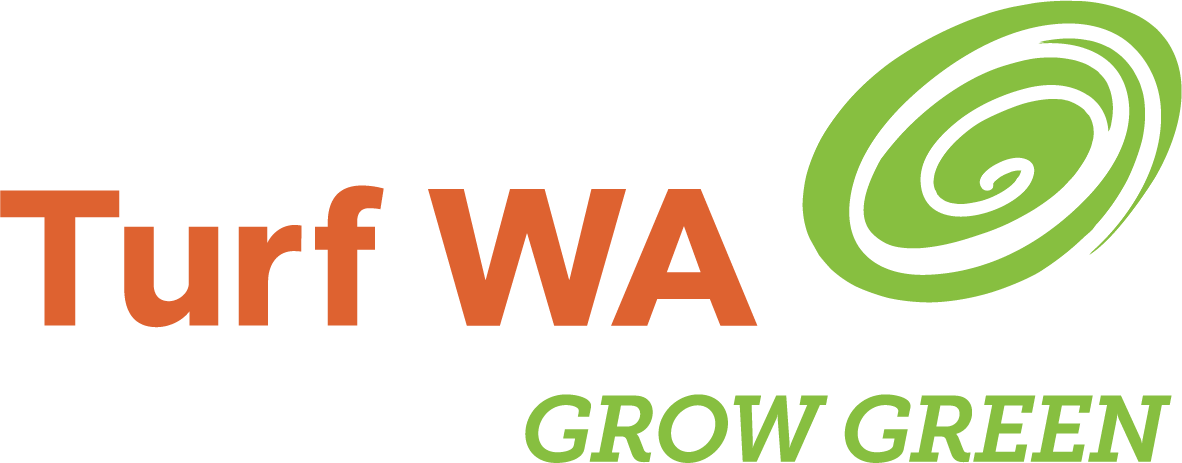WETTING AGENTS
The majority of Perth, Peel and the Southwest soils are basically sands that essentially require regular application of a premium quality, soil wetting agent, and a superior soil moisture retainer, to allow for optimum wettability and water holding capacity in soil profiles.
Effective and regular application of these two products ensures that the root zone of your lawn is easily able to draw moisture from this pool of retained water. The Turf Growers Association of WA members highly recommend utilising the superior wetting agent, Aqua Force, and soil moisture retainer, Bi-Agra™ as the most effective combination to correct hydrophobicity in our sandy soils.
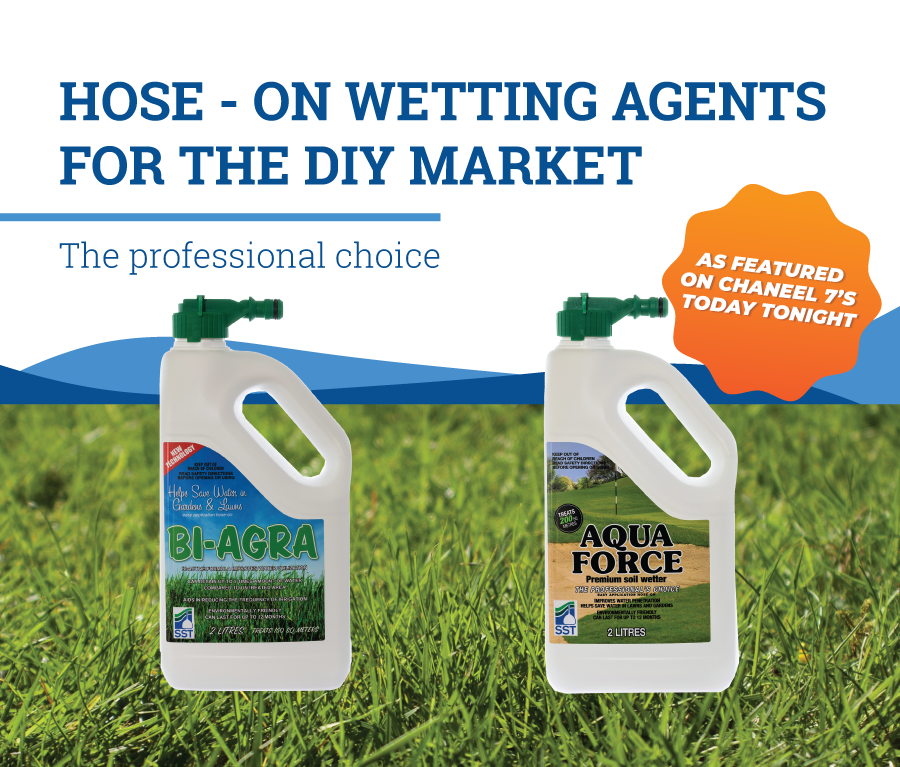
Along the coastal plains of the Perth and Peel regions, soils are mostly hydrophobic. This means that these sandy areas actually repel water rather than absorbing it. This is due to a waxy, oily type, build up on sand particles, (especially in grey sands), which in turn disallows water from penetrating the particles. This results in completely unwettable sub soil and is why you might often notice that even after a good rain,
whilst the surface soil may look wet, if you dig a little deeper, you will find that the sub soil remains dry and dusty. These sands do not absorb moisture even with substantial rain or regular irrigation!
Quality wetting agents aid in breaking down that waxy coating, and as a result an application of the product allows sandy soils to immediately absorb, disperse, and hold onto water more freely. The outcome being that a more even coverage of water in your sub soils is achieved. By additionally applying a superior soil moisture retainer a few days later, the result is that water will remain in the sub soil area
for longer. This means that irrigated water and rainwater will be held in the soil zone that services plant survival requirements, the root zone.

are notoriously hydrophobic.
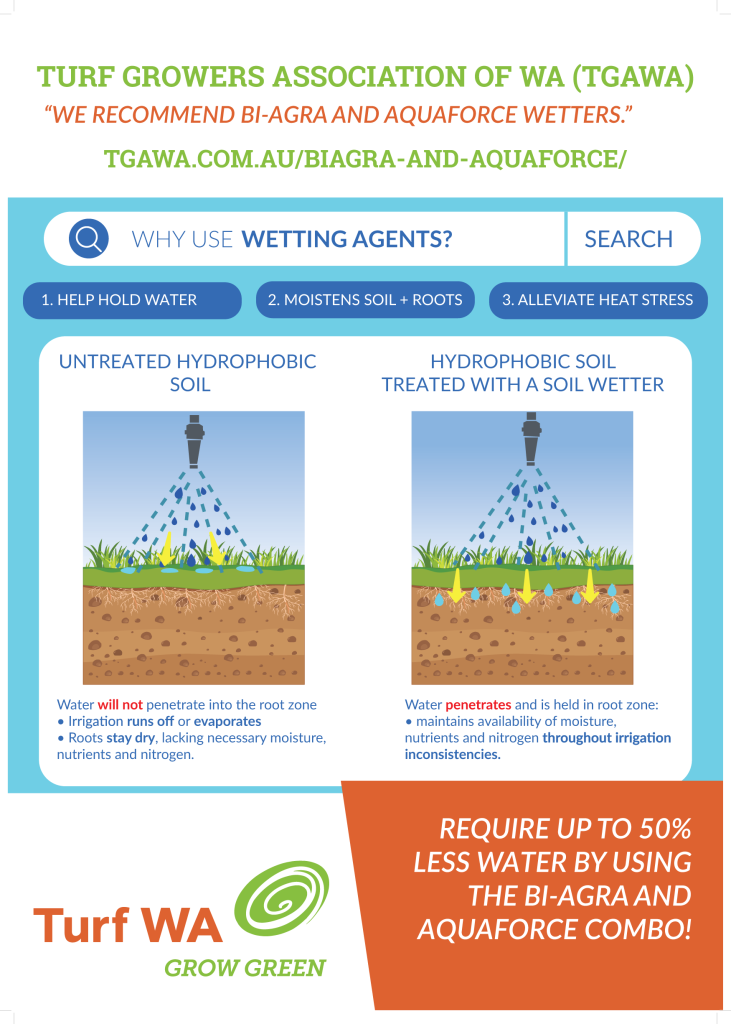
These two products are essential to your lawn and gardens survival in the hot months of the year.
Bi-Agra™ is a bi-active formula that provides both outstanding penetrations along with superior moisture retention. Bi-Agra™ strength is its ability to retain additional moisture in normally low water-retaining root zones. Unlike polyacrylamides which hold water tightly, Bi-Agra™ holds moisture in the soil, yet allows water availability through the normal process of osmosis as required by the roots. Bi-Agra™ should be used as a curative treatment on severely water repellent soils to assist with the rewetting of dry root zones. Bi-Agra™
- Can retain up to 5 times the amount of water against the root zone compared to untreated areas
- Is non-burning at recommended rates.
- Reduces turf wilting and moisture/heat stress
- Is environmentally friendly
- Is an easy hose on application
- A 2-litre bottle treats 150 m² of lawn and garden bed
When used in combination with Aquaforce premium wetting agent, it helps keep your lawn healthy and green during Perth’s summer heat and water restrictions.
Apply Aqua Force premium wetting agent initially, leaving at least four days before applying an application of Bi-Agra™ soil moisture retainer.
Aquaforce is a premium soil surfactant for premium performance! This wetter combines highly penetrating properties whilst having the ability to attach onto soil particles, providing a water attracting surface to assist water with passing through the profile. Aquaforce is less phytotoxic than many other soil wetters whilst having excellent long term soil wetting properties. (Although a low phytotoxic risk, thorough watering of all soil wetting products is recommended. As well as being an extra safety mechanism, it also enhances their performance.)
When used in combination with Bi-Agra™ soil moisture retainer it helps keep your lawn healthy and green during Perth’s summer heat and water restrictions. Apply Aqua Force and then follow up with an application of Bi-Agra™ soil moisture retainer, a few days later, preferably day 4.
Bi-Agra™ superior soil moisture retaining agent is recommended for use at the following times and should be applied at least three times a year. Turf Growers Association WA members recommend applying Bi-Agra™ at the beginning of Spring (September) and Summer (December), again in late Summer (February) and at the beginning of Winter (June) to hold winter rains.
Note: Often if wetting agents are not applied on hydrophobic soils at the advent of the first rains, (after a long period of heat), garden plants and lawns will be forced tolerate further stress in their natural environment with surface water logging and topsoil compaction. This compaction inhibits the soils natural percolation process, and the plants begin to stress with the lack of available oxygen. The surface area of the leaf thins so the photosynthetic process of carbon dioxide intake to turn starch into sugar for energy and growth is diminished. In short, plants stress unnecessarily.
A quality, wetting agent and soil moisture retainer combination pack is not expensive when you consider the coverage of the products. We believe that the Aqua Force/Bi-Agra™ combo pack, at under $100.00 for the pair, is a very worthy investment for your lawn and garden.
It is important that these soil wetter agents are used a minimum of four times a year if at all possible. They are imperative for lawn and garden survival over summer months.
FERTILISING
Fertilising regularly is imperative for your lawn’s health. Like every living thing on the planet, your lawn requires good nutrition to thrive and grow. Remember to use a slow-release fertiliser, that can provide sustained nutrients to your lawn without leaching away into the waterways. Ensuring that the fertiliser you choose has good levels of Nitrogen (N), Phosphorus (P), and Potassium (K) plus essential minerals and trace elements, is imperative. As well, there are a number of slow-release organic fertilisers that contain humates/humic acid & fulvic acid, and carbon, that really assist with soil health and plant uptake of essential nutrients. Applying a combination of the two fertiliser groups as per manufacturer recommendation, is an excellent choice.
A year round fertliser program really is vital for your lawn’s health. The Turf Growers Association WA members, recommend at least four applications of fertiliser a year, (at the beginning of each season), however optimum outcome will be achieved by feeding your lawn every two months in the warmer months. Fertilisers should be applied when your lawn is actively growing. (Our allied member Living Turf supply some of the best turf fertiliser products in Australia.)
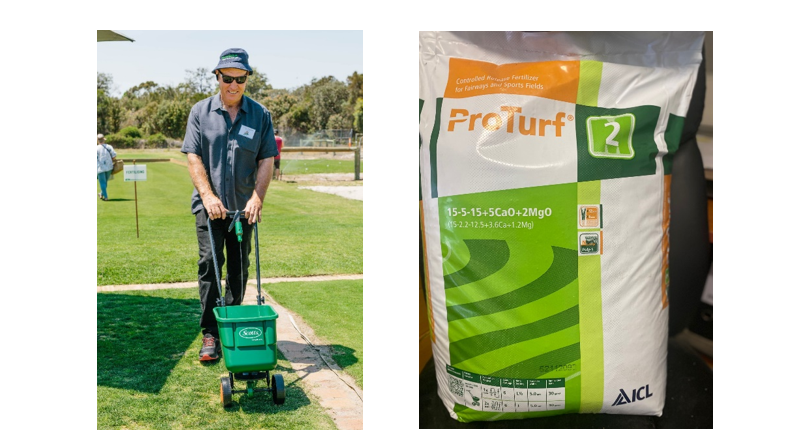
As a rule, slow-release fertilisers should be spread at a rate of no more than 2kg (a standard 2 litre ice cream container) per 100m² per application. Our motto is to apply a little, often.
SOIL COMPACTION
Soil compaction is an often-unrecognized issue. Compaction and soil hydrophobicity (anti wetting), regularly go hand in hand, often causing dry patches or dead areas of lawn. Soil compaction inhibits the soils natural percolation process resulting in lawns and plants becoming quickly stressed with the lack of available oxygen.
With the wear and tear on lawns over hotter months, soil tends to solidify, diminishing the quantity of oxygen within. Lack of oxygen essentially suffocates the root system of lawns. Compaction should be addressed by circulating air through the soil under your turf. To achieve this you can use a spiked roller, a pitchfork, or even spiked shoes to break up the soil. You might also wish to consider the use of gypsum, if you have a clay-based soil, as this will assist in separating your soil, loosening any clay that might be in the subsoil.
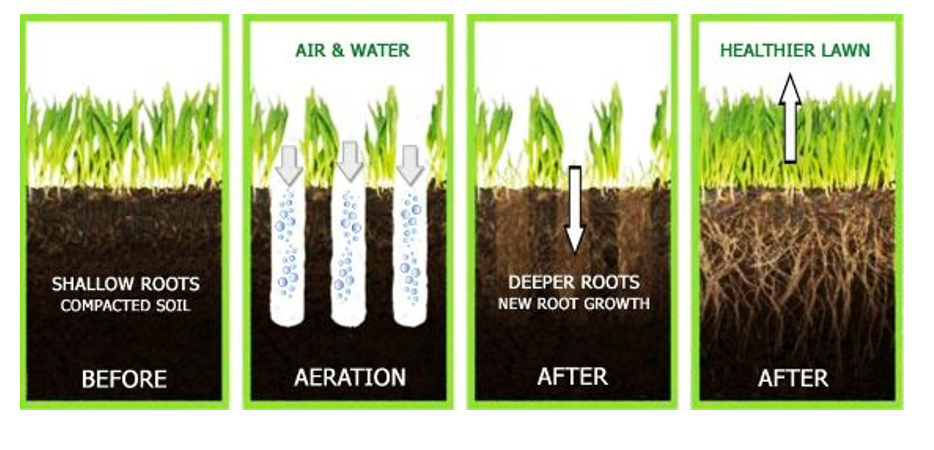
TEST YOUR SOIL PH
On the off chance that you haven’t checked your soil’s pH levels for some time, Autumn is an appropriate time to do so. Out of balance pH levels will not only diminish your lawn’s health and how it looks, but it will also reduce the impact of fertilizing your lawns. The ideal lawn pH level is 6.5, which is somewhat acidic.
To correct a low soil pH, especially in clay-based areas such as the foothills and upwards in the ranges, use Dolomite Lime. Dolomite Lime has the added benefits of Calcium and Magnesium which increase your lawn’s ability to take up the other macronutrients it needs. In sandy soils, correcting high soil pH can be done using Sulphate of Ammonia, which will work to neutralise alkaline soils which are particularly prevalent on coastal plains where grey sands prevail.
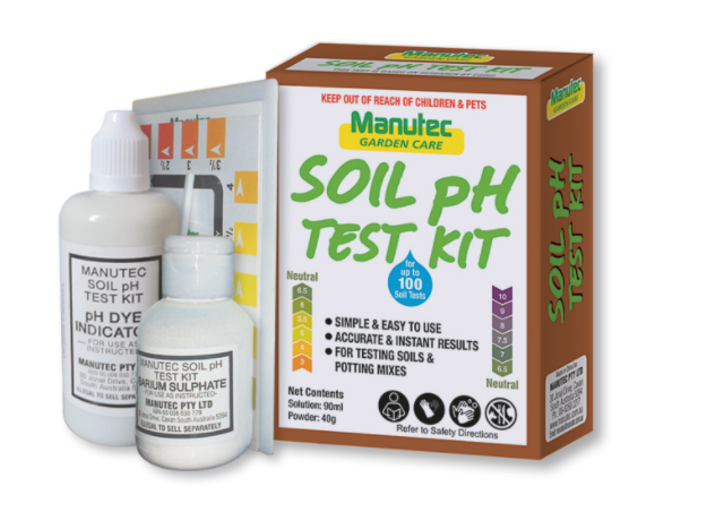
SMART IRRIGATION
Investing in a smart irrigation controller, such as the Hunter Hydrawise Controller, is a really “smart” move. Our allied member Hunter Industries, supply these units across a variety of outlets in WA, at very reasonable pricing. For a few hundred dollars, these great controllers manage your irrigation scheduling year-round, without you having to do anything at all. They even suspend irrigation if there has been rain or if atmospheric moisture levels are high. They irrigate to evapotranspiration and will automatically adjust irrigation times to suit each month’s seasonal requirement. They are a set and forget unit, that result in up to 50% water savings.
WHAT IS A SMART IRRIGATION CONTROLLER?
Simply stated, a smart irrigation controller or timer has built-in water saving features including a sensor to adjust to the optimal sprinkler run time based on the local weather conditions. Smart controllers help to provide a healthy, beautiful landscape while reducing water use. This not only saves water, but also reduces costs for the homeowner.
WHAT IS A SMART IRRIGATION CONTROLLER?
Simply stated, a smart irrigation controller or timer has built-in water saving features including a sensor to adjust to the optimal sprinkler run time based on the local weather conditions. Smart controllers help to provide a healthy, beautiful landscape while reducing water use. This not only saves water, but also reduces costs for the homeowner
https://www.hunterindustries.com/en-metric/smart-controller-watersense
Investing in a smart irrigation controller, such as the Hunter Hydrawise Controller, is a really “smart” move. Our allied member Hunter Industries, supply these units across a variety of outlets in WA, at very reasonable pricing. For a few hundred dollars, these great controllers manage your irrigation scheduling year-round, without you having to do anything at all. They even suspend irrigation if there has been rain or if atmospheric moisture levels are high. They irrigate to evapotranspiration and will automatically adjust irrigation times to suit each month’s seasonal requirement. They are a set and forget unit, that result in up to 50% water savings.
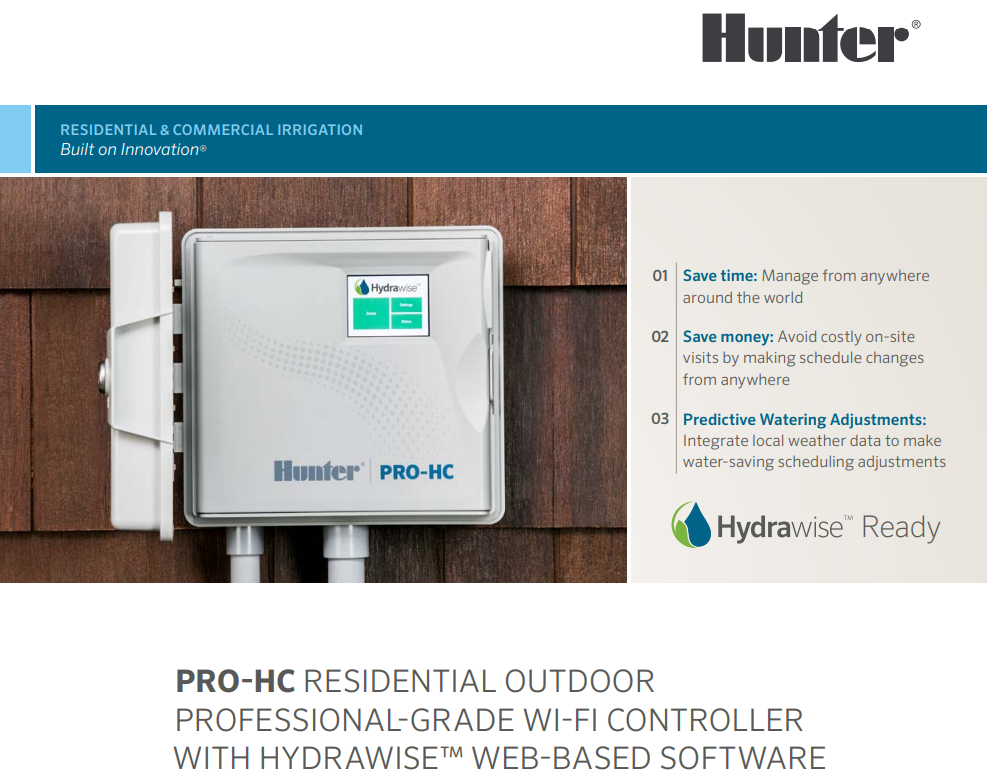
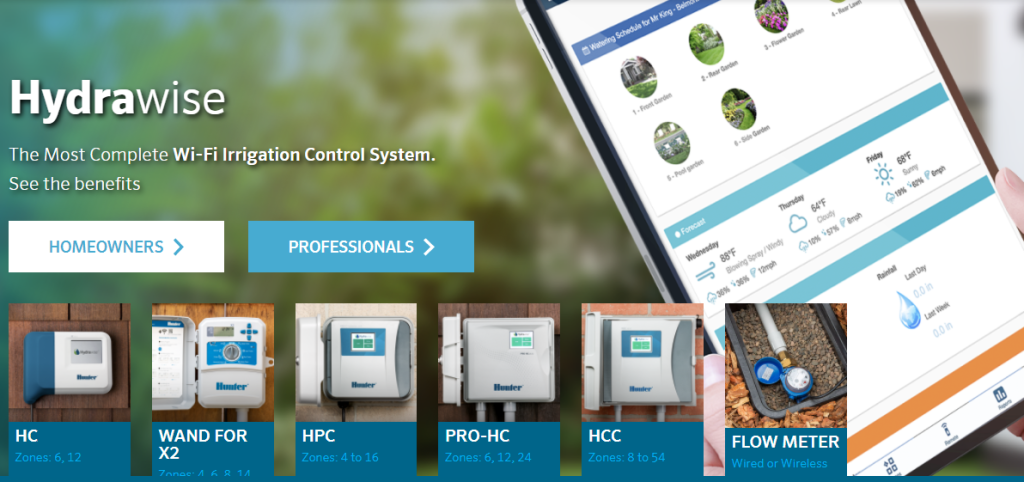
You can purchase the latest Hunter Smart Irrigation Controllers from our allied member Nutrien Water https://nutrienwaterstore.com.au/products/hunter-pro-hc-wifi-enabled-outdoor-controller?&utm_campaign=nutrienwater-store-website-digital-campaign-2022&utm_source=google&utm_medium=branded%20paid%20search&utm_content=google-smart-controller-adwords-awareness-acquisition-Nutrien-Water&source=sb-google&medium=cpc&gclid=EAIaIQobChMI6pCdjOjh-wIVAiQrCh2YcQuuEAAYASAAEgITu_D_BwE
LAWN GRUBS
Keep an eye out for lawn grubs, such as Army worm and Cut worm and treat immediately if located. They love the humid weather and move quickly during this time. The first sign will be larger patches of dead or dying lawn. If this occurs, look out for, small, white butterflies flying low, above your lawn in the evenings. You can also tip a bucket of warm soapy water over a healthy patch to the side of the already damaged turf to see what sort of grubs/caterpillars come up. If you find evidence of these destructive critters, you can apply a granulated lawn grub killer. This usually sorts the problem out quick smart.
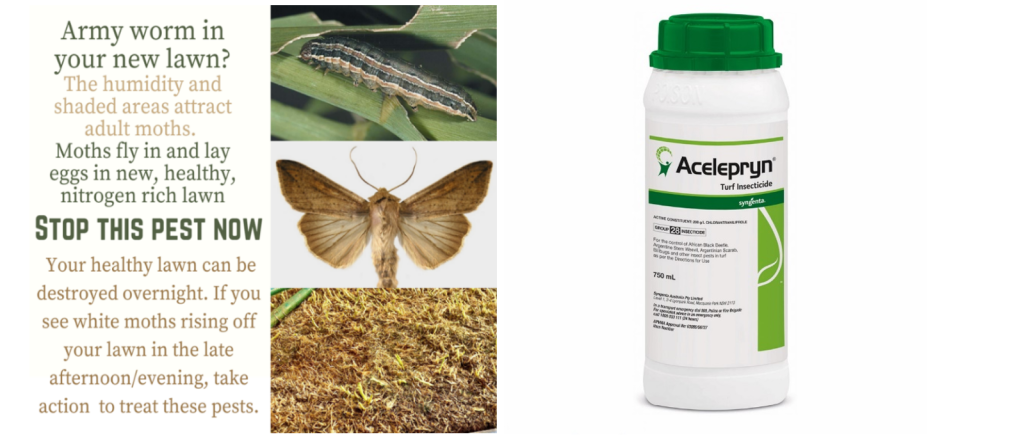
FUNGAL DISEASES
The emergence of fungal disease in your lawn is usually a sign of stress, whether it be from extremes of temperature and moisture, night watering, poor nutrition, scalping and soil compaction. It’s not common to have fungal disease in home lawns, neither is it unheard of. If you think that you have a fungal issue, it might be best to contact a lawn consultant, such as our allied member, the Lawncare Man, as they can identify, and are licenced to spray for, fungal diseases.
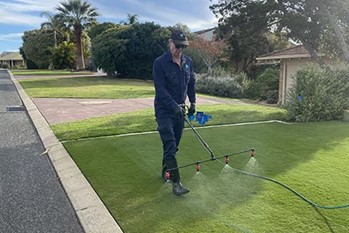
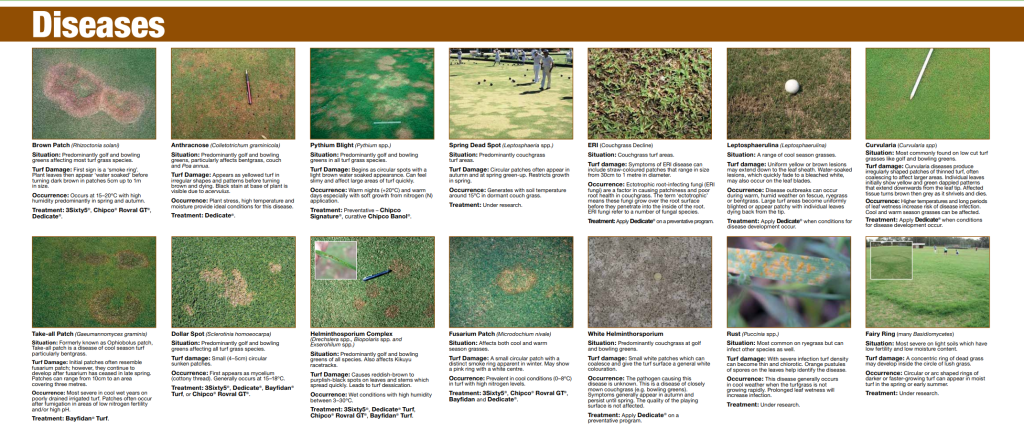
https://www.au.envu.com/~/media/PRFAustralia/Resources/Turf%20Poster.ashx
MOWING YOUR LAWN
Live by the motto – DON’T MOW TOO LOW! It is important to not take more than one third of the leaf off with each mow. This will offer a superior leaf surface zone for your lawns for photosynthesis, allowing the grass to create essential sugars which are key for its general wellbeing.
This is particularly important in hot months. If you scalp your lawn in hot weather, you risk stressing your plant to the point of permanent damage. The same can be said when going into winter when your lawn stops growing and becomes dormant for the cooler months. If you mow too low in cool weather, you risk creating sparse surface coverage, that will create the perfect environment for weed infestation.
There is one exception to this rule only, and that is, if you wish to renovate your lawn in Spring by hard mowing or vertimowing.
Recommended mowing heights for the different warm season turf varieties are
- Soft leaf Buffalos should ideally be mown every 7 to 10 days at a height of approx. 15 to 20mm during summer and in winter mow every 3 to 4 weeks at a similar height.
- Couch grasses should ideally be mown every 7 to 10 days at a height of approx. 10 to 12mm during summer and in winter mow every 3 to 5 weeks raising the mowing height to approx. 12 to 16mm.
- Kikuyu Turf should ideally be mown every 7 to 10 days at a height of approx. 12 to 16mm during summer and in winter mow every 3 to 5 weeks and raise the mowing height to approx. 16 to 20mm.
- Zoysia should ideally be mown every 14 to 21 days at a height of approx. 15 to 20mm during summer and in winter mow every 4 to 5 weeks at a similar height.
- Queensland Blue should ideally be mown every 10 to14 days at a height of approx.10 to13mm during summer and in winter mow every 4 to 5 weeks and raise the mowing height to approx. 14 to16mm.
Remember if you want a vital, healthy, strong lawn, then never take more than a third of the leaf when mowing!
VERTIMOWING/ DE-THATCHING AND AERATION
Vertimowing or dethatching is undertaken by using a specialised mower to remove the build-up of thatch in your lawn. De-thatching can occur on any existing lawns. Thatch is a build-up of dead, organic matter and excessive roots and stems that have developed within the profile of your grass. It is a natural process caused by your lawn producing more organic matter than what can be broken down. Some turf varieties will thatch more than others and overtime the height of your lawn can increase.
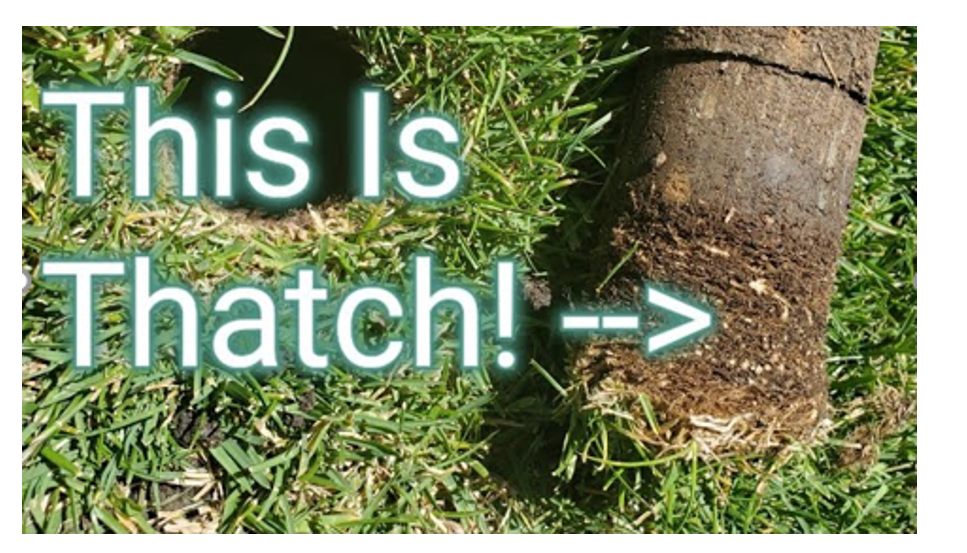
The best time to dethatch your lawn is in late spring, when the conditions allow for quick recovery. If your lawn feels ‘spongy’ to walk on, you will probably need to remove the thatch to give your lawn the best chance of being healthy. It is important to remember that most home lawns don’t require annual dethatching, most will only require dethatching every five years or so.
You can use a mower to dethatch. It is a laborious method whereby you progressively lower the mowing height on your lawnmower right down over several runs of your lawn, to remove thatch. It isn’t the most efficient of methods though. Vertimowing really is the most effective method of dethatching. By using a specialised verti-mowing machine you will remove the entire thatch layer, quickly and effectively. It is however, probably best to bring in a professional contractor to undertake this work. Vertimowing is a messy, dirty job, which is highly laborious and produces a lot of waste material. If you want to be assured that the job is completed efficiently and in a single session, hiring a professional to undertake the task, and take responsibility for waste handling is really sensible.
Once vertimowing has been undertaken, your lawn will be left to regenerate from its above ground and below ground runners. With the right maintenance program, it will only be a matter of weeks before you have a beautiful, natural, green, and healthy lawn where there was dirt. Its quite a miraculous process!
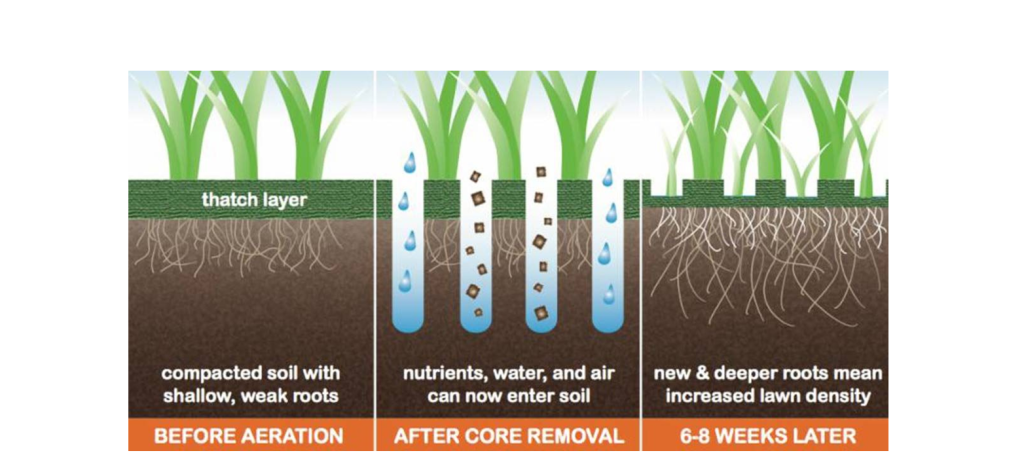
Lawn coring or aeration is the method of decompaction and breaking up the soil to allow air, water, and nutrients to flow in where needed. This is a fast way to reinvigorate your lawn by helping it to quickly access oxygen and nutrients straight into its root zone. Grass, like any other plant, needs to find the right balance of nutrients, air, and water to thrive. Your lawn can become very compacted simply from foot traffic and use, and from organic matter buildup. Lawn coring is undertaken primarily for the purpose of increasing drainage and aeration of the soil under your lawn.
Compacted lawns suffer because oxygen can’t get into the root zone of the plant. Water cannot be absorbed properly either, this results in water not being able to run through the soil profile, leading to dehydrated turf that is unable to grow and thrive as it should. Compacted turf effectively become hydrophobic, pushing water away rather than absorbing it.
Lawn coring is done with a lawn coring machine which is pushed over a lawn’s surface and punches out plugs of soil, thatch, and grass, leaving many holes in the surface.
WINTERGRASS CONTROL
If you have problems with Wintergrass each winter and spring, you can apply an unscheduled Wintergrass pre-emergent such as Barricade prior to winter. Pre-emergent’s are sprays that can be applied to lawns and gardens BEFORE weeds appear. They have an herbicide component which is designed to kill annual weeds, such as winter grass, before they sprout.
If you choose to use a pre-emergent, you will usually apply the first application in the middle of March each year. St Patrick’s Day is a great day to mark on the calendar as a reminder! It is around this time that night temperatures drop, and weeds such as winter grass start to appear. Unfortunately pre-emergent sprays will not work on weeds that have started to germinate, nor will they kill weeds already developed.
In the home yard, if these weeds are establishing now, your best bet is to hand weed them out, before they grow to a stage that will affect your lawn.
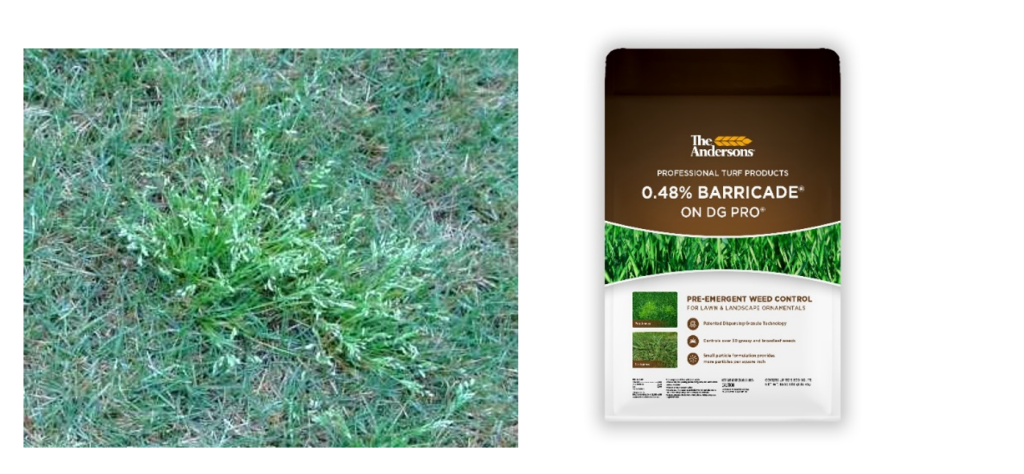
Turf Growers Association members do not encourage the DIY use of scheduled herbicides in home gardens, if you choose to apply a pre-emergent, we urge homeowners to try an herbicide that is unscheduled, meaning that it is safe and not poisonous. Unscheduled sprays will have little impact on soil microbiology so as not to impact on the ecosystems under your lawn, they are safe to use around pets and domestic chickens, and your family.
In summary it is possible for people to still maintain their lawns with proper responsible management of water.
(The Water Corporation grants an exemption from water restrictions for 8 weeks for new lawns and people need to call Water Corporation on 131039 to register for the exemption).
To find our more click here to visit the water corporation website


